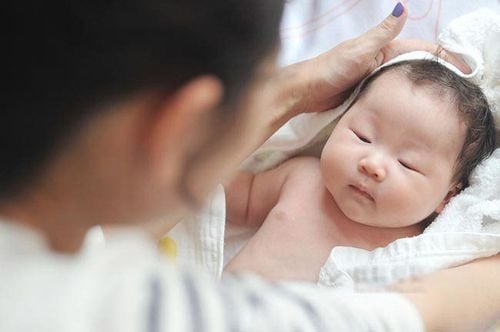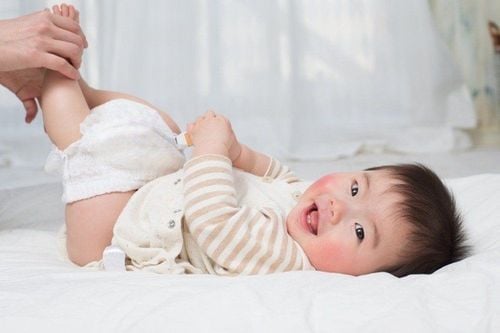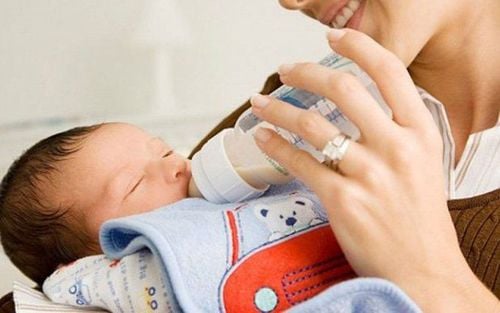This is an automatically translated article.
The article was professionally consulted by Doctor Nguyen Thai Ngoc Chau - Neonatologist - Pediatrics - Neonatology Department - Vinmec Phu Quoc International General Hospital.You should learn everything you need to know about 42-week-old infant development, track your 42-week-old baby's development and milestones like talking, walking, growth, memory and more so more.
1. Boost your brain
Your 42-week-old baby is getting smarter! After 10 months, babies begin to grasp concepts like time, distance, depth, cause and effect, and they will incorporate them into their play. For example, children can stack rings of different sizes on a plastic cone, lower them, then stack them up in a new order to see what they look like. Your child will roll a ball towards you, hoping that you will push the ball back towards him. In a multi-ingredient plate, your child will separate some of the food from the plate, which is a sign that the child is learning to identify and arrange different shapes, colors and textures. Children will continue to learn about the properties of objects by crushing, tearing, tasting and throwing anything they can get their hands on.
Children at this age begin to express a wide range of emotions, from fear and sadness to joy. Your child may look embarrassed when you catch her doing something that is forbidden, excited when you put her on her favorite high chair, and excited when you see your loved one. Some children begin to show surprising mature traits at this stage. Children may purse their lips and whisper "Mmm!" when they taste something delicious, stomp their feet to the beat of music, or even stare into space as if they have a lot of thoughts on their mind. Encourage children to express themselves and help them learn words to describe how they feel, by saying things like "You look so excited!" or "Didn't that food taste good?"

Sự phát triển của trẻ giai đoạn 42 tuần sau sinh với cách tìm hiểu về tính chất của đồ vật
2. Switch to drinking from a cup
Pediatricians often recommend that babies switch from bottles to drinking cups with straws and sippy cups by their first birthday, as bottle-feeding later can lead to tooth decay and other dental problems. For some children, the transition isn't a big deal, but for babies, especially those who have been bottle-fed since birth and have become attached to a bottle, the transition can be overwhelming. quite difficult and takes more time to get used to. Your child may flatly refuse a cup, cry or struggle, or even try to put the whole cup in his mouth.
To make the transition easier for both mom and baby, it's a good idea to purchase a small cup with handles on either side and fill it halfway with breast milk or formula or diluted juice. Then show your baby how to lift the cup, bring it to his mouth, and drink. Your child may just play with the cup at first, which is why it's best to buy one that won't overflow, but your child may end up spilling water out of the cup. But don't worry, most kids will eventually get used to this change.
Children need to provide enough elemental zinc/day for them to eat well, reach the correct height and weight and exceed the standard. Zinc plays a role in affecting most biological processes taking place in the body, especially the breakdown of nucleic acids, proteins... Organs in the body when zinc deficiency can lead to a There are a number of diseases such as neurological disorders, irritability, etc. Therefore, parents need to learn about the role of zinc and guide them to appropriate zinc supplements for their children.
In addition to zinc, parents also need to supplement their children with other important vitamins and minerals such as lysine, chromium, B vitamins,... errands.
Please regularly visit Vinmec.com website and update useful information to take care of your baby and family.
Reference source: parents.com; mamanatural.com














